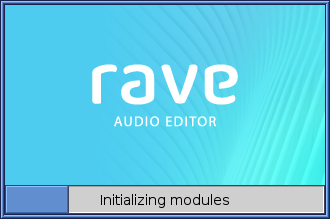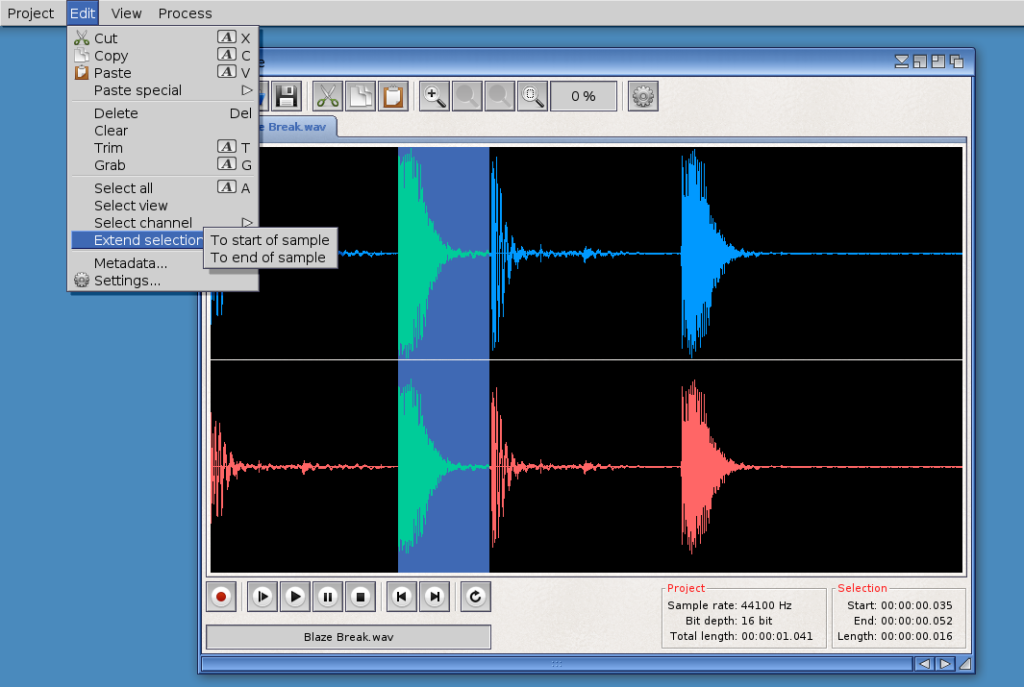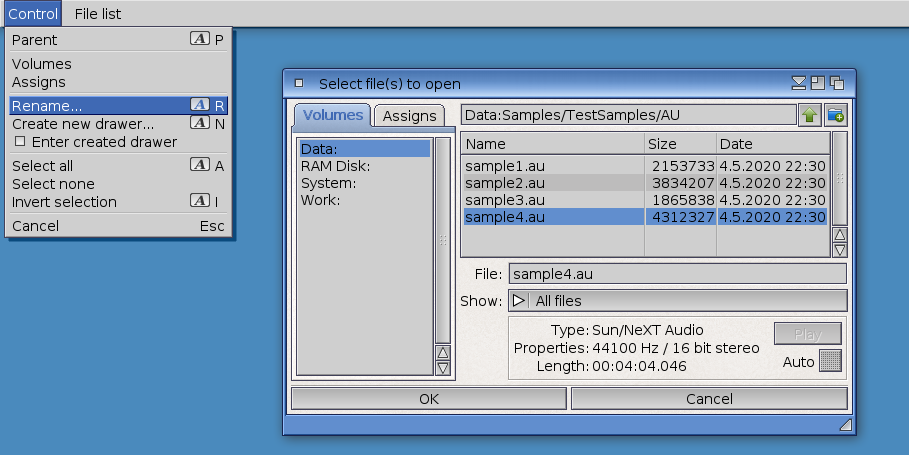Raving on
“April is the cruelest month,” says T. S. Eliot in the opening of his most famous poem, The Waste Land. Well, I sincerely hope this year will be an exception because I’d say that March was tough enough. The Covid-19 pandemic got a little out of hand here in the Czech Republic, resulting in another hard lockdown, so I really wouldn’t like to see April compete in cruelty with its predecessor!
I had every intention to release a beta preview of the Rave audio editor before the end of the month, as I had announced in my December post. But given the circumstances, I just couldn’t get to the finish line. With daycare facilities closed as of 1 March, my wife and I became full-time teachers, activity leaders and cooks on top of our daily jobs, and although our five-year-old is a great little fellow, having him around 24/7 doesn’t leave one with much time and energy for programming. I normally enjoy my late-night Amiga sessions, but with so much to do during the day I often struggled to stay awake past 8pm. So, quite understandably, March has seen much less progress than I had planned and hoped for. To add insult to injury, at the time of this writing I still haven’t got the foggiest idea when the lockdown will be lifted and I’ll be able to pick up speed again.
Ironically enough, March was an exceptionally good month for AmigaOS4, with some major releases seeing the light of day. The cross-platform multimedia-oriented programming language Hollywood went up to version 9, bringing the biggest update in six years (see this link for a non-exhaustive list of new features). A few days later we saw the much-anticipated Release 2 of the Enhancer Software pack, the undisputed high point of which is hardware-accelerated video playback and various improvements to the graphic subsystem. My favourite media player AmigaAmp also got updated in March, and as if it were not enough, on the very last day of the month Harald Kanning made a surprise release of a new AHI driver. Amiga platforms (classic or next-gen) don’t see AHI drivers released very often, so the choice of OS4-compatible sound cards has until now been rather limited. What Harald’s driver brings to the party is cards compliant with the Intel HD Audio specification, which are cheap and easy to come by. This means that one no longer has to resort to older models, which often can only be sourced second-hand.
So it’s not that AmigaOS4 users have no new toys to play with at the moment – quite on the contrary. But given my inability to add to the string of happy releases I feel it would at least be fair to give some news on Rave. So this is a brief development progress report and a summary of what I managed to do in the past month or so.
First, my old friend Jan designed a logo for Rave and also provided me with some additional graphics for the program. Jan and I have collaborated on various projects since the early 1990s when we both were in the demoscene, and although he’s now a busy professional lad (and probably looks upon my continuing Amiga passion with a benevolent smile), he has never turned me down when I needed his skills. Thanks to his contribution I was able to implement a simple splash screen that indicates the progress of the program start-up:

I also found some spare time to extend the program’s Edit menu and add several new functions to control sample range selection and manipulation. On top of the usual Cut, Copy and Paste combo, I have implemented the highly useful Trim (only keeps the selected range and removes everything else) along with Clear (sets the selected sample data to zero), Delete (same as Cut but does not copy the data into the clipboard) and Grab (creates a new project containing data copied over from the selected range). The new Paste Special sub-menu extends your pasting options with some handy functions for specifying the position at which the clipboard data should be inserted. Furthermore, in order to make range selections easier, a few related commands have been added to the Edit menu as well. All this means that although the initial version of Rave will be relatively basic and limited (especially as regards the number of effect plugins), it should at least get you covered for reasonably comfortable waveform editing.
Nevertheless, the program component that has lately received the most attention is the file requester module. One of the early screenshots I published shows that Rave utilizes a custom file requester, instead of the standard one provided by the system via the ASL Library. While this may sound unnecessary, there are good reasons why I decided to go to such lengths. Above all, the ASL requester falls very short when it comes to customizing it for the needs of more complex software. For example, in a modern audio editor you will expect to be able to enquire about sample properties, possibly even preview your sounds before you load them. Similarly, when you save audio files you’ll want to configure the output format from the file requester rather than via a separate configuration window (as is typically the case in Amiga sound editors). This leaves the ASL requester out of the question: you need to develop your own.
In Rave, file selection is handled by a separate program module implemented as a private BOOPSI class. The initial idea was to make it streamlined for audio use, focusing particularly on the features my editor needed. The result was a requester that did its job (except for audio preview, planned to be implemented later) but lacked some of the ASL features. Certain properties such as file display order were not configurable, the requester did not support DOS links (because audio files are rarely linked), and there were no functions for file management such as Create New Drawer or Rename. But after some time, second thoughts crept in. I realized that with the ASL requester being so ubiquitous in AmigaOS, many users would take its features for granted and might consider my custom replacement half-baked. Therefore I took to adding more functionality, as the March situation permitted, to get closer to the original. And I think the current result is a very good compromise: it retains a lot of the ASL look and feel, while being tailored for the program’s needs and closer to what you see in professional audio software on other platforms.
So the good news is that although the plan to march on in March kind of fell through and the beta version will need some more time to get completed, Rave has still received quite a lot of love and the development is certainly going on. Which reminds me of the old I Ching that says: “Going on means going far” – I really like the sound of that!

